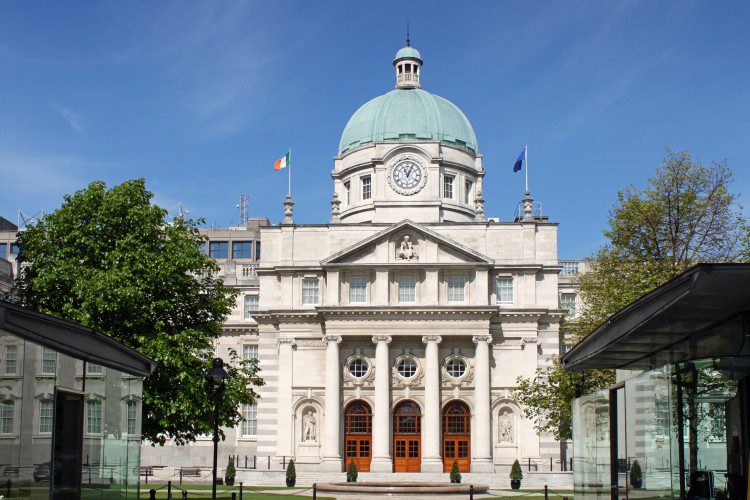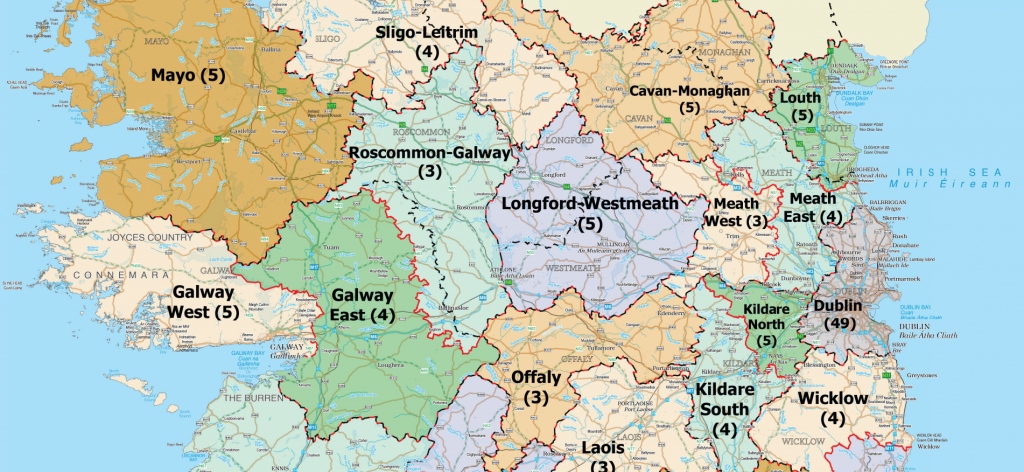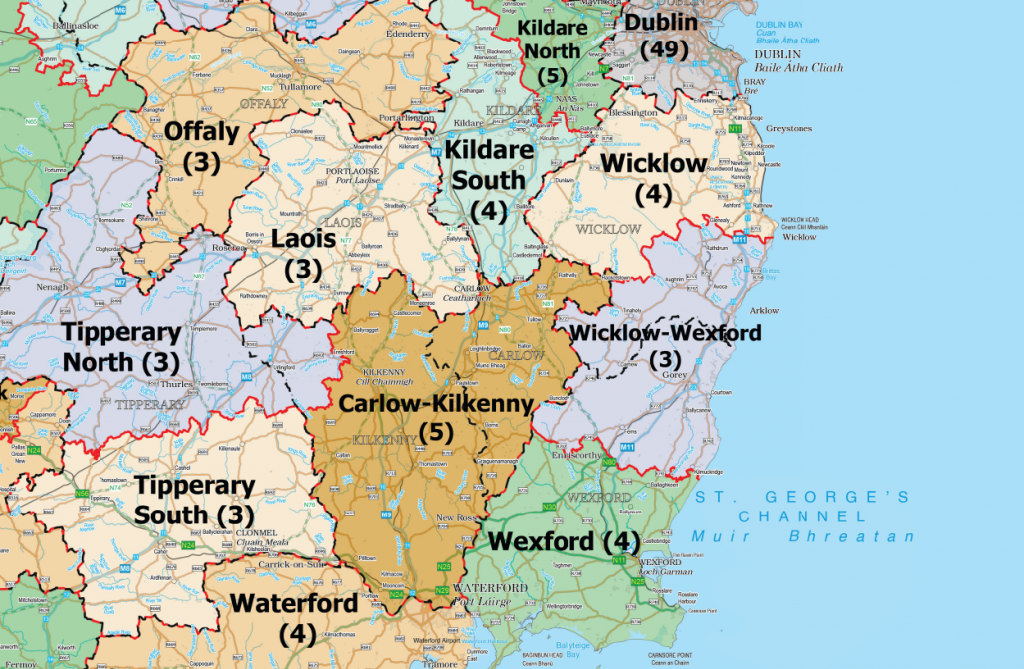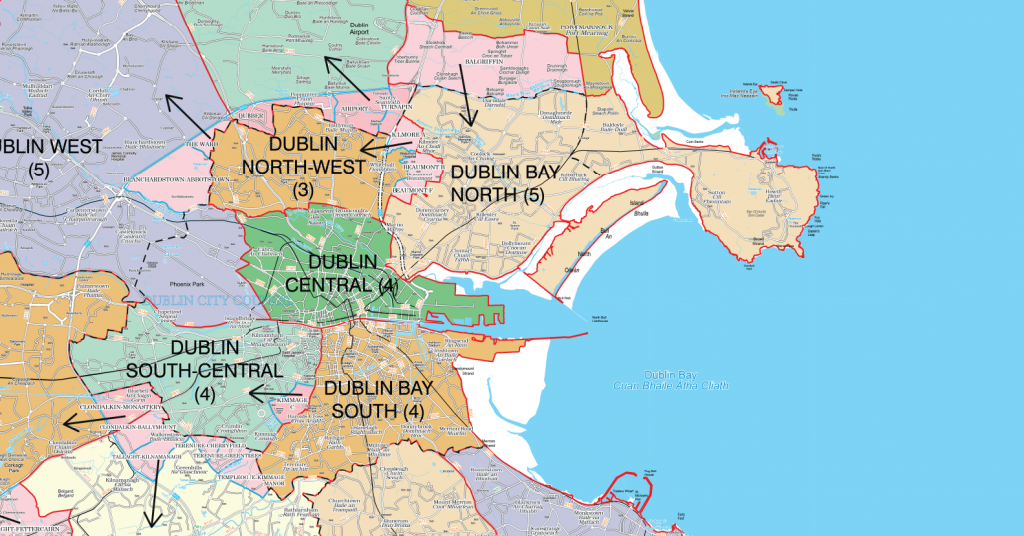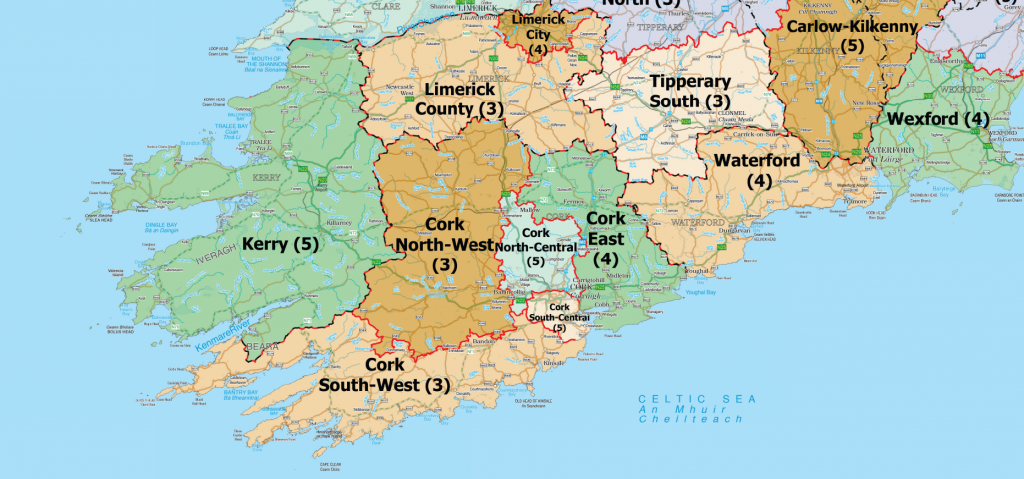Ireland’s newly formed Electoral Commission has published its much-anticipated Constituency Boundary Review Report, recommending an additional 14 TDs and four new constituencies ahead of the next General Election.
The review followed a census, which showed Ireland’s population exceeding 5 million people for the first time in 171 years. More importantly, this means that each of the current 160 TDs is representing 32,182 people – a ratio that must not exceed the 30,000 mark according to the Irish constitution.
The Commission therefore had the challenging task of balancing the need for additional Dáil seats while minimising breaches of county boundaries and taking on board the public’s views received via public consultation earlier this year.
As a result of this process, the Commission recommends that the next Dáil holds 174 seats. This number is lower than anticipated by many and shows that the Commission is clearly prioritising continuity over the disruptive impact of adding a higher number of seats, with the goal of futureproofing against continued population increase. 174 seats translate into a representation ratio of 29,593, which is just below the constitutional limit, and there are circa half a dozen constituencies where the ratio is higher than the 30,0000 limit.
The Commission’s decision to err on the side of caution and recommend what is perceived as minimal changes comes at a cost. Ireland’s population is projected to grow further in the coming years, most likely exceeding the 30,000 mark again in the next Census and Review in five years’ time. Additional changes before the end of the decade are almost certain.
In the meantime, the recommendations – once adopted via vote in Dáil Éireann and legislated for – will shape the way Ireland’s parties, incumbent TDs and potential candidates approach the next General Election, generally anticipated to take place after budget day in autumn 2024.
What did the Commission recommend and why does it matter?
The next Dáil will have 174 seats, an increase from currently 160. This also means 88 TDs are needed to form a majority after the next election – no easy endeavour given the intricacies of Ireland's PR-STV voting system. An election via proportional representation with a single transferrable vote (or PR–STV) means constituency size is paramount, with larger four and five-seat constituencies increasing the chances of smaller parties and Independents. This influences possible options for coalition formation. Current polling in Ireland indicates a potentially significant shift in favour of Sinn Féin, with Fianna Fáil and Fine Gael likely to face off in more head-to-head tussles than previously encountered.
To accommodate for the increase in TDs, the number of constituencies will rise from 39 to 43. The number of three-seat constituencies will increase from 9 to 13. There will be fewer four-seat constituencies (15 instead of 17), and more five-seat constituencies (15 instead of 13). The smaller parties will be happy about the latter as their candidates tend to fare better in larger constituencies. Meanwhile, the larger parties, Sinn Féin in particular, will welcome the increase in three-seaters across the country.
Beyond the addition of 14 new TDs and four more constituencies, the Commission also proposes widespread changes to constituency boundaries. The Commission made it a priority to repair breaches of county boundaries, reducing them from 10 to 6, to ensure voters within the same county also vote in the same electoral constituency.
Only seven constituencies, including Donegal and Kerry, remain completely unchanged under the proposal. In what some commentators have described as ‘tinkering’, a number of other constituencies see various degrees of change and the devil will be in the detail. While the impact of major reforms, such as splitting constituencies in two, is apparent, in many cases it can be the minor changes to local boundaries, such as the shift of Portarlington from Kildare South to Laois and Offaly, that decide political careers. Politicians and party strategists will now assess the report’s impact and align their strategies for the next election accordingly.
Prior to the Commission’s review, a number of Oireachtas members already declared their intention to retire after the current Dáil term. Yet, many incumbent TDs and Senators would have awaited publication of the report to make their decision, and we would expect further announcements to follow suit over the coming months.
Top constituencies to watch
Wexford, Wicklow and the new Wexford-Wicklow
On the East coast, a new three-seat constituency was created, called Wexford-Wicklow, taking territory from both counties. In turn, the constituencies Wexford and Wicklow lose one seat each, making them four-seaters. Both constituencies will likely see fierce competition among five incumbents over only four seats in the next election. The candidates for Wexford-Wicklow remain to be seen, but Fianna Fáil could win one of the three seats.
Dublin gains a new constituency
Ireland’s capital has gained a new constituency on the Northside, with the current five-seater Dublin Fingal being split into two constituencies, delivering 3 seats each. This development will come to the dismay of the smaller parties like Labour and will likely benefit Sinn Féin and Fine Gael. On the Southside, little relief is offered in the highly contested Dublin Bay South constituency, as no additional seats were added to the four-seater. Fine Gael will want to regain a presence where it once held two seats, therefore challenging the incumbent TDs, two of whom are party leaders of smaller parties, Greens and Labour respectively. Neighbouring Dublin-Rathdown, where all 3 TDs currently hold Ministerial roles, will gain an additional seat. Similarly, Dublin West will gain a fifth seat, making re-election for Taoiseach Leo Varadkar easier, though the expectation of him bringing in a running mate will be all the higher.
Two new seats in Cork
Tánaiste Micheál Martin and the Ministers, Michael McGrath and Simon Coveney, who share a constituency, will also benefit from an additional seat in Cork South-Central. The overall number of TDs in County Cork will rise to 20, and voters will also see changes to the boundaries. These include moving parts of Cork East to Cork North-Central, which coincides with a strong voter base for local Labour TD Seán Sherlock. It remains to be seen whether Deputy Sherlock decides to move constituency in the next election along with these voters.
Three-seat constituencies in Ireland’s heartland
In the Midlands, the five-seater Laois-Offaly will be split along county lines into two three-seat constituencies: Laois and Offaly. Moving southward, voters in Tipperary will also see the five-seat constituency split in two. Tipperary South and Tipperary North will each send 3 TDs to Dáil Éireann.
Outlook
Despite the Commission treading carefully, this redraw of constituency boundaries will undoubtedly shape the outcome of Ireland’s next General Election. And, while the political parties assess the implications on a local level, we will only begin to see the full impact once incumbents and new candidates signal their intention to stand for election over the coming months.
The full report is available here.
